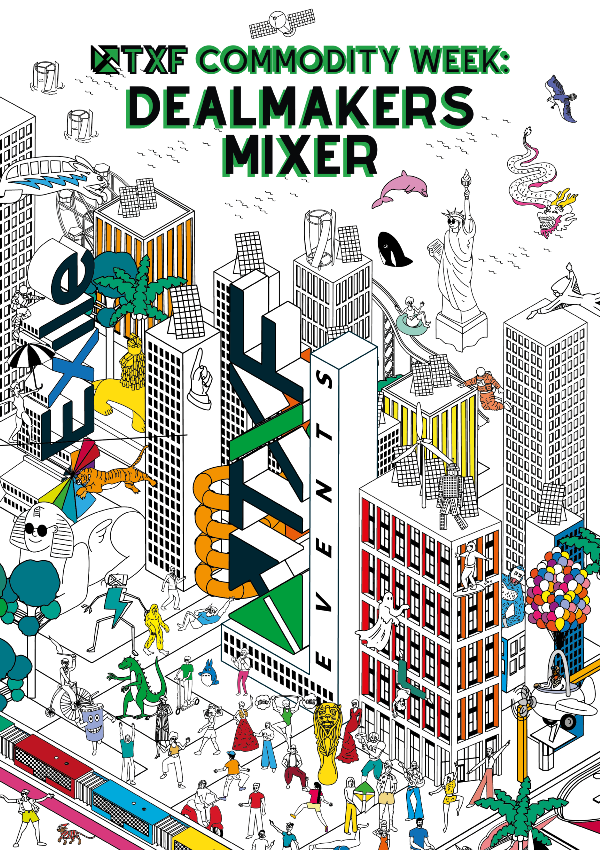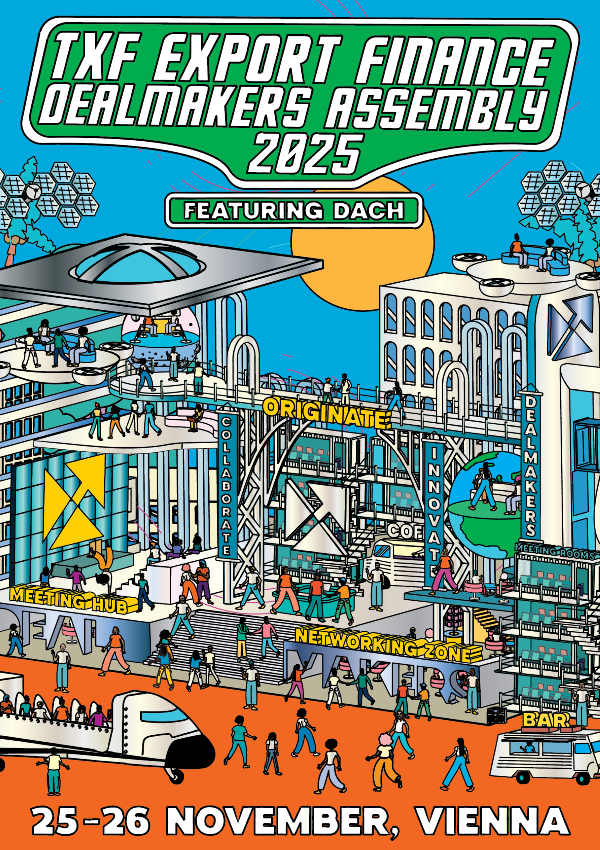ECAs and the once elusive SME: Hunting the Snark?
What has Covid meant for ECAs and their ability to attract smaller companies? How are ECAs responding to the needs of these new clients and how are they broadening their financing partners? Once the pandemic imperative is over, will those smaller businesses be back for more? TXF talks to four ECAs about their experience with SMEs – and finds out things may have changed for good.

"Just the place for a Snark! ... Just the place for a Snark! I have said it thrice: What I tell you three times is true." [The Hunting of the Snark, by Lewis Carroll]
It’s long been on the wish list of export credit agencies to engage a broader range of corporates to provide export support. For whatever reason, be it shyness, a lack of knowledge from banks or corporates of what’s available, perceived cost damping demand or simply access to the smaller companies themselves, diversifying that ECA client base to help smaller companies’ exports has been a ‘nice to do’, and a bit of a struggle, rather than an imperative – until last year when the SME no longer seemed elusive. Is it now a case of be careful what you wish for?
On 29 March last year, as the crisis hit, Swedish export credit agency, EKN, enhanced its working capital guarantees for SMEs and larger companies. “Within 72 hours of launch we received €12 billion of applications,” says Carl-Johan Karlsson, director of SME and midsized corporate business at EKN. By the end of 2020, that number was around €20 billion.
Interestingly, Karlsson noted a marked difference in behaviour between large corporates and SMEs at the outset. Secured bank financing was being taken up by large corporates, but few applications were coming in from SMEs. That was a surprise at first. “I think they were shellshocked [by the crisis],” Karlsson says. EKN doubled down its efforts. “We receive around 80% of new SME clients through banks and our bank ambassador scheme.”
Grace periods on loans granted by banks in mid-March and the resulting low number of bankruptcies also helped improve bank confidence in lending, particularly with the backstop of EKN.
The crown jewels
By mid-May, volumes of applications rose with €600 million worth of contracts for SMEs. Exports picked up from the end of May and were almost at ‘normal’ levels by September 2020. “We had a record high number of SME clients in the end. We have seen the crown jewels of SMEs from banks due to the uncertainty. It’s been an extremely busy and successful time for EKN,” Karlsson says.
What was behind the hesitancy in the SME response and what then turned it around? Was it all about communication? “Swedish banks were conservative in March and were reluctant to grant approvals. SMEs finally picked up in May, when they also had the confidence that the banking system would trust [them] for financing…in the end SMEs were eight weeks behind large corporates sending in applications for finance,” Karlsson says.
Kim Richter, head of SME and Cleantech at Denmark's export credit agency, EKF, says his experience was a little different. EKF already had a working capital programme in place at the outset of the pandemic, and were then able to adapt it.
Indeed, EKF set up its working capital guarantee facilities for SMEs in the 2008 global financial crisis, and has had a department dealing with SMEs as far back as 2010. Its publicity at home means it has very strong brand recognition among Danish exporters. It pioneered a bank ambassador programme to train bank account managers to help market EKF products (which its neighbours in Sweden happily acknowledge they have used as a template).
“We had a swift reaction from SMEs, so we quickly used up half the programme, but we had a later response from large corporates,” Richter says. “In May/June last year SMEs stopped asking for extra coverage. We were surprised, but by then there were multiple other initiatives in play – such as companies being able to pay VAT and other taxes late and liquidity was pushed into the market.” EKF had also seen very few bankruptcies by the end of the year. “We do expect further casualties as a lot of subsidies are keeping some players alive that in a normal year wouldn’t be.”
Last year was a busy one for EKF too as they were very focused on working capital and short term insurance. “We have closed almost the same normal business volume as in 2019 to the SME sector, but on top of this we have rolled out crisis programmes for working capital and a reinsurance programme covering risk up to DKK30 billion ($4.9 billion) for the short term market.”
The crisis working capital facility has been prolonged until the end of February, but Richter expects further extension until the end of April.
EKF has been helping non-bank financing for SMEs too. “We also supported two crowdfunding platforms with direct loans aimed at supporting Danish SME exporters,” he says.
A lasting impact on SME financing?
Does Richter believe the crisis has caused a change in awareness of EKF as an agency and its export finance support for smaller companies, or will it go back to usual after the crisis has worked its way through the system?
“I strongly believe that the crisis will have a lasting impact, in two ways. The way we work with exporters and banks during the crisis, where we have been forced to use virtual meetings, etc, has proven to be quite effective and we will take the best parts of this experience with us. Secondly, being part of the government’s efforts to support Danish exporters has opened doors to further clients. We saw that back in 2009 after the financial crisis and many of the clients from then are still active with us.”
How will digitisation help (particularly EKF’s crowdfunding support)? “We digitalised our working capital programme in 2019, which has had huge impact on our ability to respond swiftly to this crisis. The Crowdlending engagement is also aiming at supporting alternative funding sources, further we hope to learn from them and be inspired to modernise our business further.”
Still mediated by banks – but NBFIs filling gaps
US Export-Import bank (US Exim) also offers guarantees to lenders rather than direct to SMEs. Steven Freshour is vice president of business credit at the agency, overseeing the working capital loan guarantee program (WCGP) which allows lenders to cut risk in lending to exporters through a 90% guarantee on principal and interest should the loan default. Exporters can gain working capital by borrowing against export-linked accounts receivable and inventory. Lenders can use this facility up to $10 million without requiring authorisation from Exim (and more with authorisation).
Working capital facilities have been tough to get for new borrowers and companies who have never had to access them before from banks, Freshour says. “Banks have been concentrating on reserving their capacity for existing clients – and their risk groups have curtailed credit in some instances,” he says. “We have seen some requests from new borrowers and US Exim has been able to provide those guarantees. We have seen non-bank financial institutions come in to fill some of the gap left by banks. We have a pipeline of new to Exim borrowers with specific contract exports. Small businesses in the supply chain which have been hurt by downgrades in their anchor credits [can be helped by the] supply chain guarantee program.”
“Where we have seen an increase in volume is in the supply chain financing guarantees side. The program was set up in 2010 and had not been much used.” Freshour points out that the supply chain program had zero volume in FY2019 (which runs to the end of September) and about $900 million in FY2020. The rest were working capital guarantees. There has been a huge increase, particularly in aircraft, an industry that has been hit hardest by the pandemic – rising from $663 million guarantee authorisations in 2019 to $1.6 billion in 2020,“ says Freshour, adding, “In early FY2021 we did another $500 million supply chain guarantee in the aircraft industry.”
Exim has also rolled out relief measures for their existing borrowers to make sure they had the borrowing base flexibility and didn’t trip any covenants in their borrowing. Nonetheless, surprisingly, many SMEs among them (Freshour estimates around 77%) have requested no relief. Freshour believes this speaks to the diversity in the portfolio.
Transparency, visibility and speed
Freshour remains optimistic and regards exporting as a great way for US companies to diversify their business and weather any domestic downturns. In mid-January 2021, Exim launched a new app for loan guarantees for working capital and supply chain guarantee lenders – Exim Loan Management System (ELMS). “The app will streamline the digital application process and speed up authorisation of guarantees and create much needed transparency, visibility and speed in the process that didn’t exist before. It will be a big improvement in what Exim working capital can offer,” he says.
Although it's still early, feedback has already been positive. “The ELMS platform has been very well received by the lenders in general. There are some that are still getting up to speed on the transition from paper applications and need additional training but that was to be expected.”
Speed of response has been a major element in engaging smaller businesses. The pandemic has pushed many countries to act quickly, empowered agencies to collaborate between departments and pare back bureaucracy to keep funds flowing.
UKEF, has faced a big uptick in demand for short term trade finance support from SMEs. In terms of emergency response, it has been working alongside its sister organisations, the British Business Bank and various UK government departments, which were quickly mobilised to help with working capital support for smaller companies. Schemes such as the business Bounce back Scheme which provides loans support with 100% guarantees up to £50,000 for small business, and Coronavirus Business Interruption Loan Scheme (CBILS) which provided 80% guarantees to accredited lenders to corporates (and had been broadened to SMEs) until the end of March (along with a scheme for large corporates). None of these specifically put UKEF itself in contact with more SMEs, though.
“One thing UKEF really did see was a massive uptick in demand for credit insurance,” says Carl Williamson, Head of Trade Finance at UKEF. “A threefold increase, which we were able to fulfil, helped by the relaxation in the EU temporary framework, which allowed us to provide more credit insurance for OECD countries.” More than 160 UK SMEs used UKEF backing for the first time.
Step shift for UKEF
Towards the end of the summer, government attention turned towards developing a product range for post-pandemic support for recovery. In July, UKEF launched its Export Development Guarantee programme which focused on larger corporates (for instance, Ford took up a £500 million facility focused on capital investment to support export growth). Most recently, in December, however, UKEF announced its General Export Facility (GEF) for SMEs and corporates.
This was a step shift in the way the UK supports SME exports, moving the emphasis from supporting individual export contracts to a general facility that is more product agnostic and allows (at the outset five banks – HSBC, Lloyds, NatWest, Santander and Barclays) to help support working capital for exporters. Under the scheme the government can give an 80% guarantee on financial support from lenders to support general exporting costs, up to the value of £25 million.
“For us the next few years will be very focused on the SME,” Williamson says. “UK government is very focused on growing SME exports and supply chains. Like other [ECAs] we haven’t seen many bankruptcies to date. As companies come out of support schemes, we are going to become even more important to enable working capital going forward.”
The concept and design of GEF has been very well received, Williamson says, with UKEF and the banks now working on a number of applications for this new product. “We are now working with the five UK clearing banks to raise awareness of the product across businesses and trade associations to maximise take-up.”
NBFIs are going to be creeping in for UKEF too. On 23 February, following on from GEF, UKEF launched its Standard Buyer Loans Guarantee (SBLG) scheme to support SME exports by helping exporters get paid upfront while buyers can benefit from flexible repayment terms guaranteed by the UK government. It allows UKEF to guarantee a loan of up to 85% of the contract value with a UK company up to the value of £30 million, incentivising lenders to provide finance to companies overseas who are buying from the UK. UKEF has also been broadening out the range of financiers it works with – on the pilot with CDE Global, through which the Northern Irish company supported extended payments for Sebri Group’s silica quarry project in Tunisia, financing was arranged through AF Capital Partners.
After the crisis dies down, the map for SMEs exporting, and how they work with export credit agencies is likely to have changed for good.
Have I answered the question of whether ECAs should be hunting the SME? Probably not. In Lewis Carroll’s nonsense poem, the Hunting of the Snark, the mythical Snark turns into a Boojum, which is a bad thing, apparently. And nobody started with a blank piece of paper as the Captain used for a map. But that’s a story for another day.
“They sought it with thimbles, they sought it with care; They pursued it with forks and hope; They threatened its life with a railway-share; They charmed it with smiles and soap.”
Become a TXF subscriber for unrestricted access to TXFnews.com 365 days a year
Contact us for individual and team rates by emailing subscriptions@txfmedia.com
Take a look below at a selection of exclusive subscriber articles published last week
Danske Commodities: Green is the new grey
TXF spoke with Tor Mosegaard, head of European power trading at Danske Commodities, to discuss the Danish energy trading house’s role in...Read on here
Egypt's $1.9bn Assiut oil refinery debt signing nears
Assiut National Oil Processing Company (ANOPC), a project vehicle established in 2018 by state-owned Egyptian General Petroleum Corp's subsidiary Assiut Oil Refining Co, is expected to sign...Read on here
ACWA progresses Uzbek wind and CCGT financings
ACWA Power has signed US dollar-denominated 25-year PPAs for its Bukhara and Navoi wind farms in Uzbekistan. Financial close on the...Read on here
ADB approves Cambodian solar project loan
ADB approved a financing package of up to $16.4 million to finance the construction of Thailand-based energy producer....Read on here
Petroperu reopens bonds to further Talara refinery funding
State-owned oil company PetroPeru closed the issuance of $1 billion in 144A Reg S bonds in a private placement to finance the completion of...Read on here
Mercuria branches out into US PP market
Swiss-based trading house Mercuria is diversifying its funding mix by launching a US private placement, which will be split into...Read on here
US Exim makes payments to lenders exposed to Norwegian Airlines
The US Export-Import bank (US Exim) has made payments of $46 million to lenders of struggling airline...Read on here
World's largest EtW project in UAE nears debt signing
Sponsors of the world’s largest energy-to-waste (EtW) scheme in Abu Dhabi - Itochu, Hitachi Zosen, Besix and Dubai Holding - are expected...Read on here
DRUM Advisory launches to fill market gap
Commodity and trade collateral management specialist Drum Risk is launching...Read on here
ADB approves Indian road loan
Asian Development Bank disclosed this week that it had approved an Rs3.7921 billion ($55 million) loan to Dilip Buildcon’s project company of the...Read on here
Cambodia invites bids for solar park phase two
Cambodia's electricity utility company Electricite du Cambodge (EDC) opened the bids for the tender of the...Read on here





